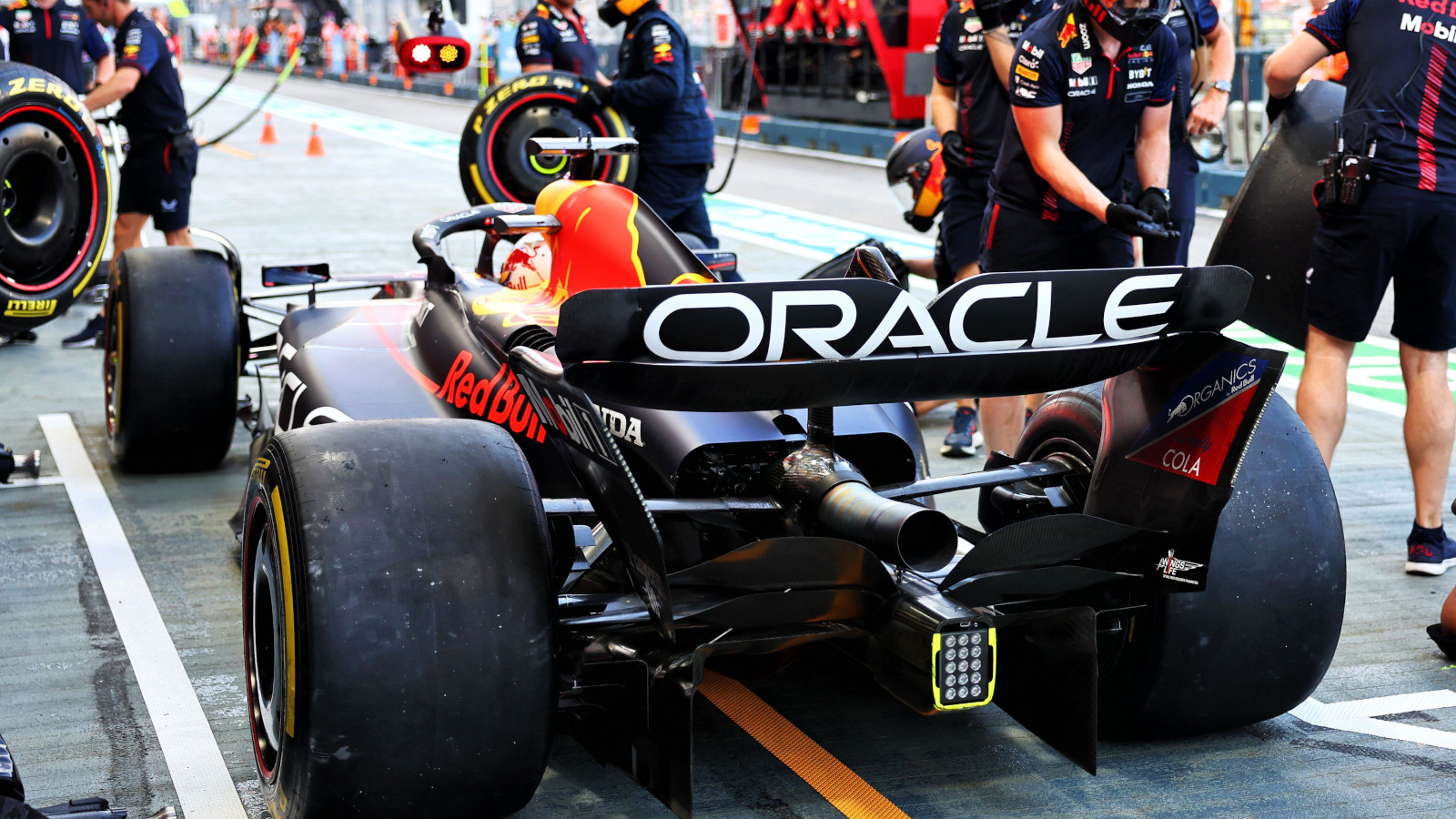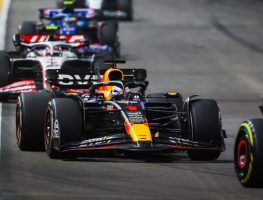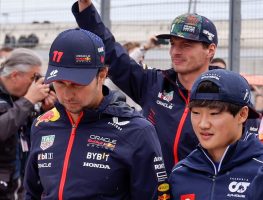Red Bull deny Technical Directive TD039 created Singapore troubles

Max Verstappen's winning streak ended in Singapore.
As two new technical directives, TD018 and TD039, came into play in Singapore, Red Bull’s race-winning streak came to an end with neither Max Verstappen nor Sergio Perez even on the podium.
Red Bull have dominated this year’s championship with the team’s stats including 14 wins in the first 14 races, six of those being 1-2 finishes, 10 pole positions, and a record-breaking run of 10 wins on the trot for Verstappen.
Best to say, they dominated until Singapore.
Red Bull deny new floor was in response to TD039
Predicting all season that it would be their bogey track, the Marina Bay circuit proved to be just that with neither Verstappen nor Sergio Perez comfortable in their RB19s.
From oversteer to understeer, rear-end issues, and pointy front, as well as upshift problems, the car was “undriveable” according to Verstappen who lined up 11th on the grid and could only recover to fifth. Perez crossed the line in eighth place.
It had pundits wondering whether Formula 1’s new technical directives, TD018 aimed at flexi wings and TD039 aimed at the cars’ floors, had an impact on the RB19 especially as Red Bull arrived in Singapore with new floor edges.
That update failed to live up to expectations from the simulator data and, after a difficult opening day for the team, was removed from the car overnight with Red Bull reportedly reverting to their Monza-spec floor and lowering the ride height.
Red Bull motorsport advisor Helmut Marko has denied that TD039 was responsible for Red Bull trialling a new floor.
“It had been planned for a long time,” he toldAuto Motor und Sport. “It worked well in the simulator and promised more downforce.”
Team boss Christian Horner also refuted speculation that the technical directives had hurt Red Bull, adamant the team didn’t need to change a “single” part of the car to comply.
“I know all of you would love to blame the TD but unfortunately, we can’t even blame that because it’s not changed a single component on our car,” he said after Sunday’s race.
“So I think circuit characteristics are different here. And I think that we just haven’t optimised a car in the right window to extract the most number.”
However, Sky Sports’ Martin Brundle felt that something, but he couldn’t say if it was the TD, had “completely destabilisedthe aerodynamics on that Red Bull around this track.
“The big telling point will be in Suzuka next weekend, they’ve got time to sort it out to an extent, because that’s very much an aero circuit.”
The issue of the TD impacting Red Bull was put to McLaren team boss Andrea Stella, who replied: “I don’t know whether Red Bull is affected by this at all. And if they were, this effect would not explain such a large gap.”
PlanetF1.com recommends
Five big rule changes the FIA introduced to reel in dominant F1 teams
Ranked: The top 10 most successful Adrian Newey Formula 1 car designs
Ferrari ‘did not touch any areas of the SF-23’ to satisfy the TDs
But while questions remain about Red Bull and the technical directives,formu1a.unoreports Ferrari didn’t have to make any changes.
With the TDs reporting having no impact on the Ferrari, Carlos Sainz claimed pole position in Singapore before holding off Lando Norris and the Mercedes teammatesto win the race.
“There was a lot of talk about the new updated TD018 and TD039, especially the latter which had already caused great damage to the F1-75 in 2022,” read the Italian publication.
然而,在马拉内洛”,他们并不担心,arrived here without having to make any structural changes to the wings, floor, or nose structure and all those areas where the FIA is intensifying checks.
“Ferrari was conservative in this respect and did not touch any areas of the SF-23 to accommodate the new directives.”
Read next:Christian Horner pinpoints what ‘completely screwed’ Red Bull in Singapore GP






